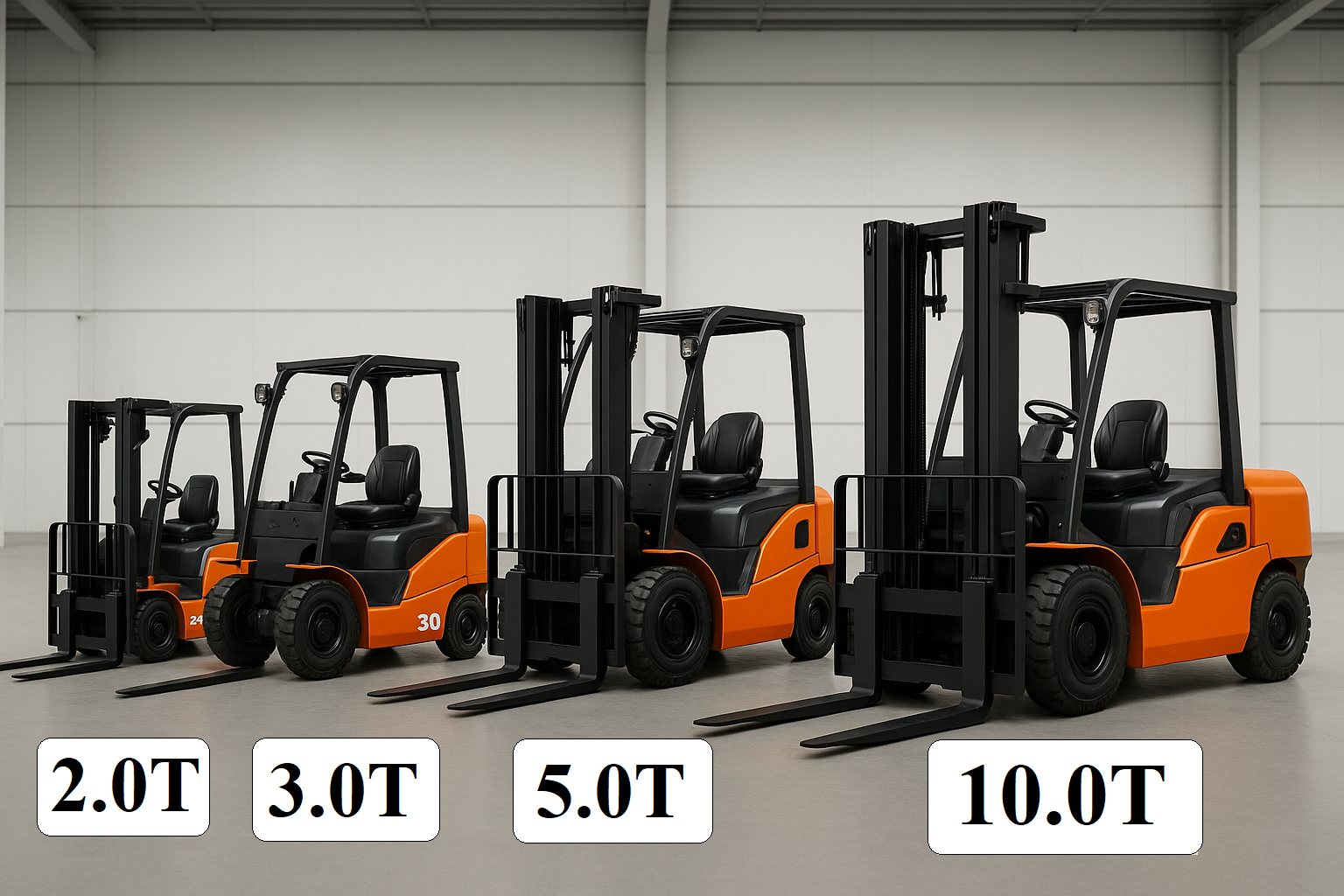DIFFERENCES BETWEEN ELECTRIC FORKLIFT MODELS: 2-TON, 3-TON, 5-TON, AND 10-TON
The differences between 2-ton, 3-ton, 5-ton, and 10-ton electric forklifts mainly lie in load capacity, size, chassis structure, and practical applications. Here’s a detailed comparison:
1. Load Capacity
| Model | Max Load Capacity |
|---|---|
| 2 tons | 2,000 kg |
| 3 tons | 3,000 kg |
| 5 tons | 5,000 kg |
| 10 tons | 10,000 kg |
2. Size and Design
2–3 ton forklifts:
-
-
Compact size, easy to maneuver in narrow workshops.
-
Small turning radius.
-
Suitable for tight warehouse aisles or light-duty floors.
-
5–10 ton forklifts:
-
-
Larger size, robust chassis.
-
Bigger tires and forks for heavy-duty loads.
-
Require solid ground and wide operating areas.
-
3. Power and Electrical System
2–3 ton models:
-
-
Use 48V or 80V power.
-
Smaller motors, lower power consumption.
-
Batteries are typically lithium or lead-acid.
-
5–10 ton models:
-
-
Generally 80V or higher voltage with high-power motors.
-
Stronger control, cooling, and drive systems.
-
High-capacity lithium batteries for performance and endurance.
-
4. Applications
| Model | Suitable Applications |
|---|---|
| 2 tons | Small workshops, light warehouses, internal logistics. |
| 3 tons | Industrial plants, central warehouses, medium pallets. |
| 5 tons | Heavy materials, large pallets, construction, wood, metal. |
| 10 tons | Steel factories, heavy containers, oversized equipment. |
5. Cost
-
Forklift price increases with load capacity.
-
10-ton models are significantly more expensive than 2-ton models due to their technical specifications and materials.
6. Operation Requirements
Forklifts from 5 tons and above usually require:
-
-
Experienced drivers.
-
Higher class licenses.
-
Wide, reinforced operating areas.
-
If you’re unsure which forklift model is best suited for your needs, let me know! I can offer some suggestions to help you choose.



